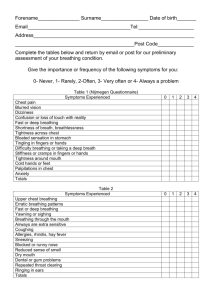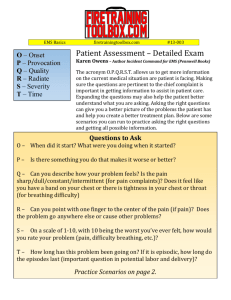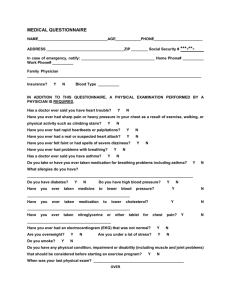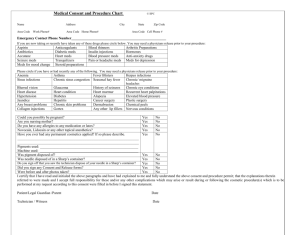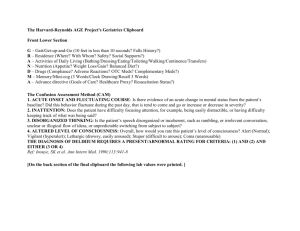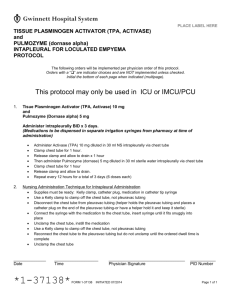Case Study with Answers - NC-NET
advertisement
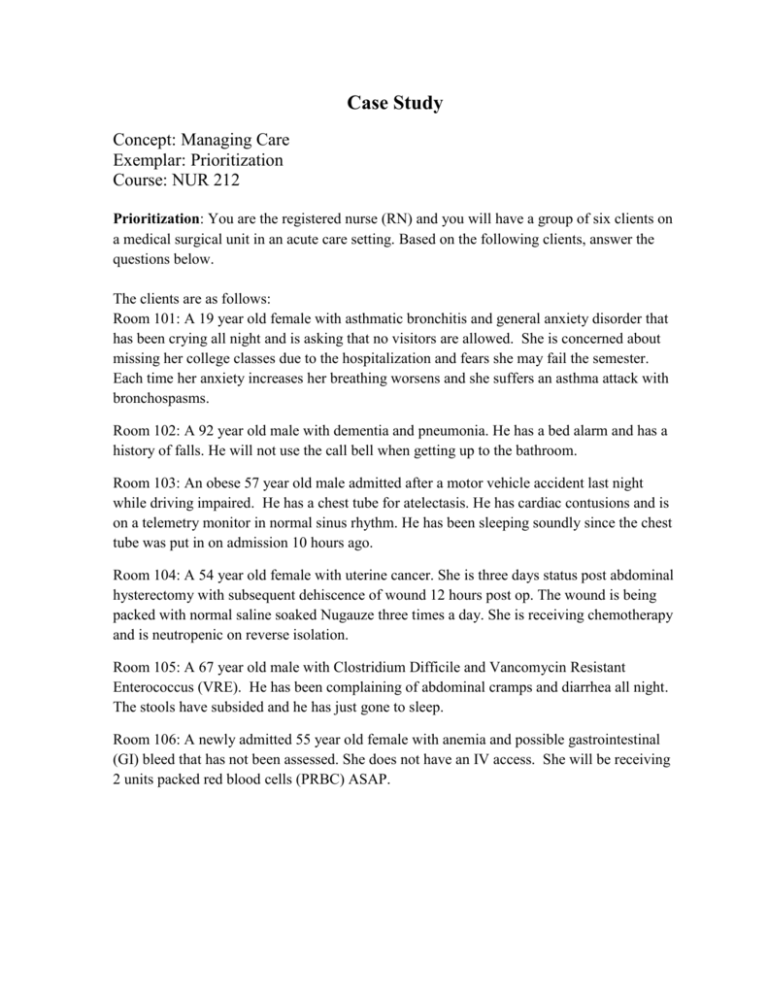
Case Study Concept: Managing Care Exemplar: Prioritization Course: NUR 212 Prioritization: You are the registered nurse (RN) and you will have a group of six clients on a medical surgical unit in an acute care setting. Based on the following clients, answer the questions below. The clients are as follows: Room 101: A 19 year old female with asthmatic bronchitis and general anxiety disorder that has been crying all night and is asking that no visitors are allowed. She is concerned about missing her college classes due to the hospitalization and fears she may fail the semester. Each time her anxiety increases her breathing worsens and she suffers an asthma attack with bronchospasms. Room 102: A 92 year old male with dementia and pneumonia. He has a bed alarm and has a history of falls. He will not use the call bell when getting up to the bathroom. Room 103: An obese 57 year old male admitted after a motor vehicle accident last night while driving impaired. He has a chest tube for atelectasis. He has cardiac contusions and is on a telemetry monitor in normal sinus rhythm. He has been sleeping soundly since the chest tube was put in on admission 10 hours ago. Room 104: A 54 year old female with uterine cancer. She is three days status post abdominal hysterectomy with subsequent dehiscence of wound 12 hours post op. The wound is being packed with normal saline soaked Nugauze three times a day. She is receiving chemotherapy and is neutropenic on reverse isolation. Room 105: A 67 year old male with Clostridium Difficile and Vancomycin Resistant Enterococcus (VRE). He has been complaining of abdominal cramps and diarrhea all night. The stools have subsided and he has just gone to sleep. Room 106: A newly admitted 55 year old female with anemia and possible gastrointestinal (GI) bleed that has not been assessed. She does not have an IV access. She will be receiving 2 units packed red blood cells (PRBC) ASAP. I tell my students that this is their group so there is not one exact answer, but they must provide rationale to back up anything different than what I consider to be correct. A) Which patient should be seen first? Second? Provide rationale. Room 101should be seen first because she has had issues with airway throughout the night. A quick check to assess the status of her breathing and anxiety level should make assessing everyone else easier. ABC! Room 106 should be seen next because the client has not been assessed. There may be problems we are unaware of. The patient needs an IV, blood, and a care plan. B) Which patient should be seen last? Provide rationale. The patient with infectious processes going on should be seen last. He should definitely be seen after the chemo patient and after the post op patient with open wound. C) You have assessed everyone and are preparing to give AM meds and treatments. Order the treatments and meds in the order that benefit the patients. Provide rationale. 1) Xanax for Room 101who has increased respirations and is coughing after receiving a call from her classmate. 2) A BID dressing change to abdomen in Room 104 3) Daily meds for Room 102 who has increased blood pressure that he has not had prior. 4) Hang second unit of blood in Room 106 5) A call from Room 103 that he stepped on his chest tube on way to bathroom and pulled it out and is having problems breathing. See the patient that stepped on his chest tube first. His lung is collapsed and needs Vaseline gauze covering the site immediately. Second see the patient who needs Xanax. If you do not see her soon she will escalate to an actual problem. Right now she is a potential. This why you should see the patient with the chest tube before the patient who has increased respirations and coughing although both are breathing issues. Third see the patient who needs blood pressure meds. His blood pressure is up. Having his scheduled meds may prevent the BP from increasing or take it down. Then it becomes a time issue. Do you have time to get the dressing change done before the next bag of blood is due? Decide after you have these other things completed.


